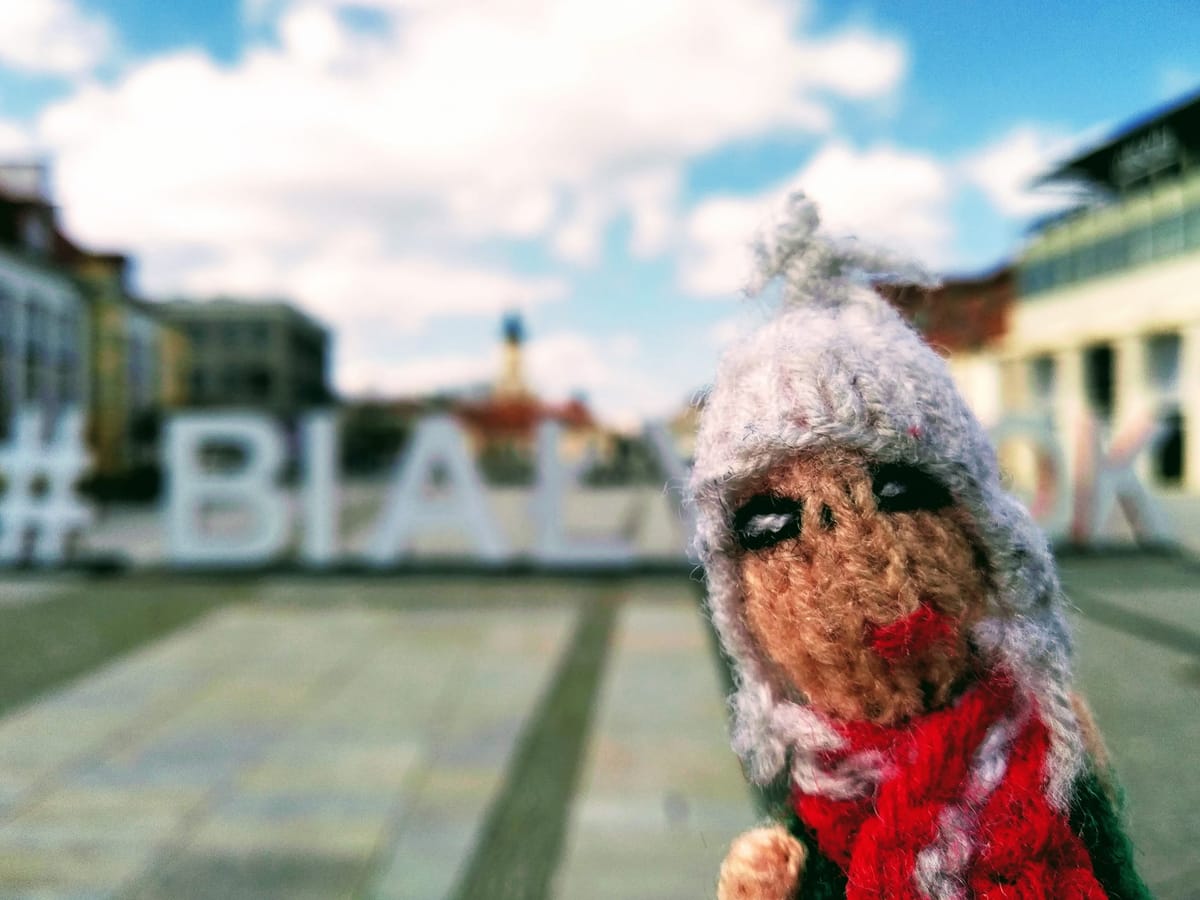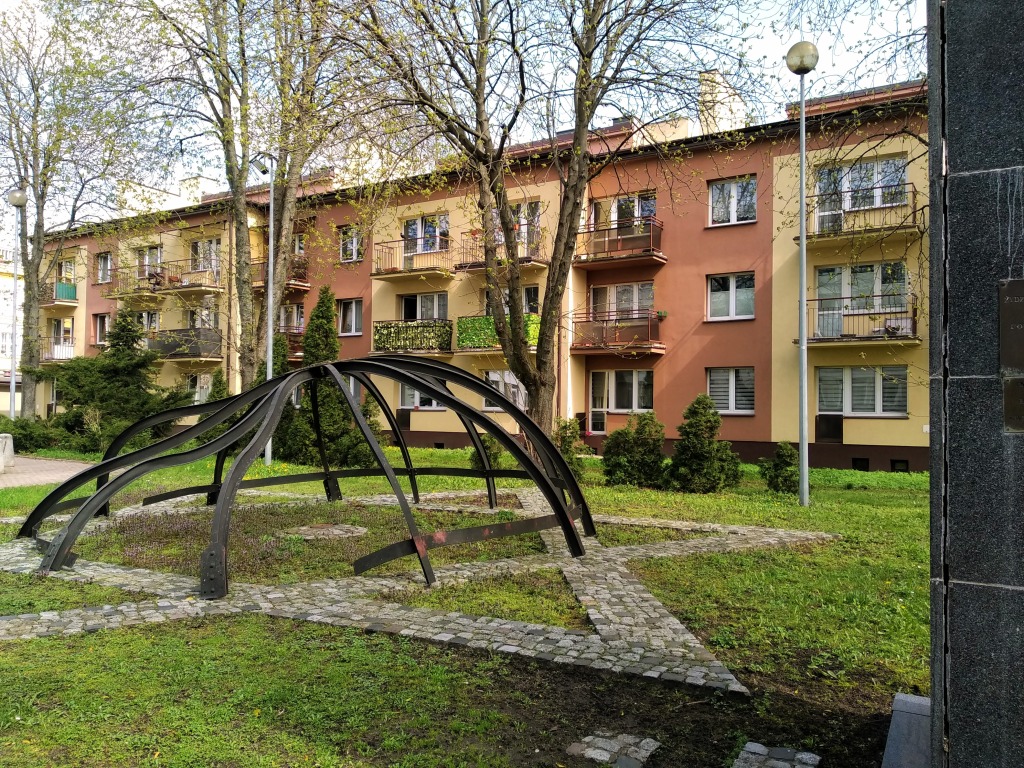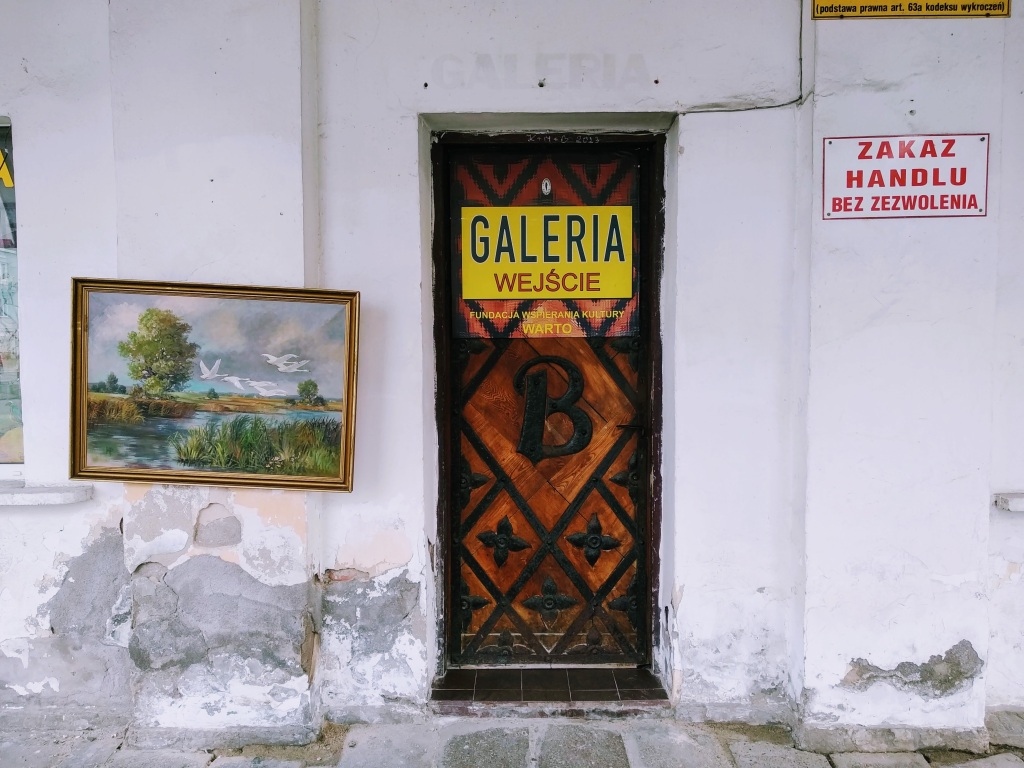Two months, day forty-six: Białystok
When you wish upon a green star.

I got taken for a thorough tour of Białystok this morning
I had couple of lessons in the morning and when I was done, one of the Esperantists came to collect me from where I'm staying (the club) and drag me round Białystok for a couple of hours. It was quite whistlestop and occasionally challenging but I enjoyed learning about the history of the place and being shown things.
Białystok is the largest city in northeastern Poland and the capital of the Podlaskie Voivodeship. Its diverse culture and melting-pot atmosphere comes from its historic ability to attract migrants from elsewhere in Poland and Central and Eastern Europe. It is approximately 50km from the border Belarus, also the eastern border of the European Union, and probably too close for comfort to Kaliningrad.

We started by walking past the Evangelical-Augsburg Cemetery to the central park, which was created on the site of the 19th-century rabbinic cemetery destroyed first by the Nazis and later by the communist authorities. At the entrance to the park there is a monument to the heroes of Białystok consisting of three columns joined by a copper crown, topped with eagle with outstretched wings.

From there, a walk towards the Kościuszko market square (not actually a square) took us to an the Aleja Bleusa, an alley which connects the market square to the park. Commemorative plaques with the names of people who contributed to the promotion of the blues in Białystok are embedded in stone slabs arranged to form a piano keyboard, which runs past the first of eight little bears hidden around the city which I intend to find before I leave.

Just off the alley is a monument to the Great Synagogue, which was built in between 1909-1913. Around where it stood is now a residential area, because the fire that started in the synagogue when the Germans set fire to it on June 27th 1941 spread to the surrounding area which was destroyed, as much of then Białystok was based on wooden architecture. When the synagogue was set alight, 2000 people who had been forced from their homes and locked inside perished, and another thousand were consumed by fire caused by subsequent shootings and bombings.
Where the synagogue stood stands a reconstruction of the destroyed dome and a memorial plaque. The plaque reads: "Our splendid sanctuary fell victim to the flames on June 27, 1941. 2000 Jews were burnt alive in it by the German Nazi murderers."

Branicki Palace is also known as the "Polish Versailles" and was built for Count Jan Klemens Branicki, a member of the Polish aristocracy whose family name appears omnipresent as benefactors of the city. The palace was built on the site of a previous house with the intention of making a suitably magnificent residence for a great Polish noble.
We had a little wander through the gardens before heading back to the (not) square via the cathedral.

The Cathedral Basilica of the Assumption of the Blessed Virgin Mary (Białystok Cathedral for short) is an extension to the oldest building in Białystok. The small white church to which it is attached was built in the 17th century and by the 19th century was long longer big enough to accommodate the many thousands of parishioners as it only had sufficient space for 1,000 people. Permission was sought from Czarist Russia to build a new church, a request which was denied, although Czar Nicholas II granted permission to build an "annex" to extend the existing parish church to accommodate the new congregation. Work on the extension started in 1900 and was consecrated in 1905, and huge 90-metre long red brick cathedral with towers that are 72 metres high is that resulting annex.
It was coming up towards lunch time and I had lessons in the afternoon, so I managed to interrupt my tour guide long enough to thank her and explain that I needed to get some food into me before my afternoon lesson. I eventually found a lovely café overlooking the market not-a-square, complete with its smiling tower, where I had a nice big coffee (the first proper coffee of the day) and a sandwich.
In the evening I was taken for drinks in the Vodka and Beer bar in which some vodkas and some beers were consumed.
